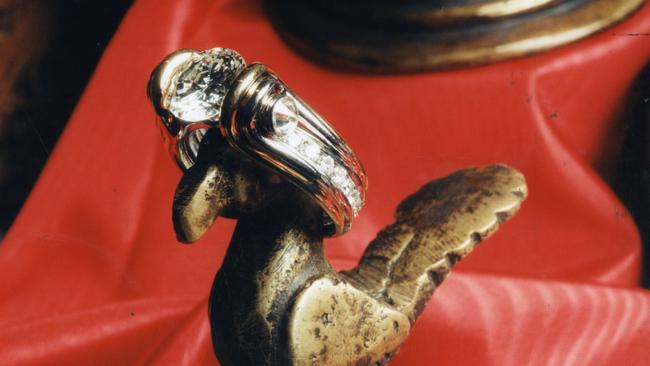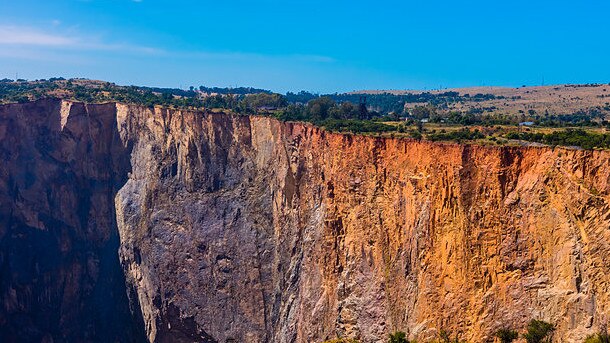De Beers is a jewel in the crown, but will it sparkle outside Anglo American?
The miner holds a unique position in the luxury world. Can it retain its crown if Anglo American decides to sell out?

On stage at the Oscars two months ago to present an award, Black Panther star Lupita Nyong’o shimmered under the lights, her silver dress sparkling alongside diamond earrings, bracelets and rings. The bling, totalling 41 carats, was supplied by De Beers. It was a reminder that, for statement fashion, diamonds don’t disappoint. Yet the photo opp for De Beers belied turmoil behind the scenes.
Diamond sales have tumbled as consumers have cut back on luxury spending. De Beers’ profits have fallen and its parent, mining giant Anglo American, is fighting a takeover. Now, Anglo has put De Beers up for sale, but could the diamond miner regain its sparkle as a stand-alone company?
The urgent need to sell De Beers has been stoked by a $64bn takeover bid by BHP, which wants Anglo’s copper mines.
Anglo has twice rejected BHP’s bids – the first was for £31bn ($59bn) – as “significantly undervaluing” the company. It has been working on its own plan, unveiled last week, to sell off assets to focus on copper, iron ore and fertiliser. The new strategy has received a mixed reaction.
“We’ve been pushing Anglo to get on with it. We felt they’ve taken too long,” said George Cheveley, a portfolio manager at Ninety One. “There was a big emotional attachment to De Beers and they’ve got over that, which is good.”
Another investor said it was “a really credible plan to make Anglo a much more focused company”. But another contended that Anglo’s strategy amounted to doing BHP’s work for it. “I’ve never seen a defence plan which made me more inclined to take the offer,” they remarked.
De Beers is the industry leader, accounting for a third of the diamond market, ahead of Russia’s Alrosa. It is a miner and a retailer, selling its stones through third parties and its own stores.
“De Beers is not a mining company, it’s not a luxury company; it’s a hybrid of the two. There’s nothing else like it,” said Paul Zimnisky, a diamond industry analyst based in the US. “It provides the opportunity to essentially buy a whole luxury category.”
Tempting as that may sound, it also makes it hard to put a price on De Beers. City analysts last week pencilled in values ranging from £2bn to £7bn.

Anglo plans to offer De Beers around to buyers while preparing it for a sharemarket float. The industry has long speculated that it would be a trophy asset for a wealthy family or a sovereign wealth fund – but such a buyer would need to stump up cash to keep De Beers’s mines in Botswana, Canada, Namibia and South Africa running in a downturn. That burden may put off private equity bidders.
“The universe of buyers is much smaller than people think,” said one industry executive. “And selling an asset at the bottom of the cycle, when you’ve told the world you’re pretty desperate to sell, isn’t the easiest way to optimise value.”
A private equity source added: “Anglo is selling assets for which there is no ready-made buyer. An IPO is a logical option.”
A float would mark a return of sorts for De Beers, which was founded in 1888 and listed in Johannesburg for more than 100 years. For much of its history, it was controlled by the Oppenheimer family, who used to land their helicopter on the roof of its London office. De Beers was delisted in 2001 and Anglo bought out the Oppenheimers for $US5bn in 2011. Today, Anglo owns 85 per cent of the company, and the government of Botswana the rest.
Any IPO would need to be done in consultation with Botswana, which is still finalising a new deal to allow De Beers to continue to operate in the country over the coming decades.
Opinions are divided on whether the public markets are the right place for a company operating in such a cyclical industry. Some believe that De Beers would be a tricky proposition for the stockmarket.
“The nature of being a single-commodity company means you will be more volatile – diamond demand is fairly difficult to forecast,” said Neville Chester, senior portfolio manager at Coronation Fund Managers. He suggested that Anglo might be better served by focusing on costs and returning cash to investors.
Cheveley, at Ninety One, suggested that De Beers could flourish on its own as it would no longer have to compete with Anglo’s other divisions for capital. “Anglo has just not spent money on marketing diamonds over the last 20 years or so,” he said.
The suspicion remains in some quarters that Anglo may be selling a crown jewel just before it stages a recovery. As recently as 2022, De Beers made $US1.4bn in underlying earnings. “People forget that, in upturns, commodity businesses generate enormous amounts of cash,” said a source.

The diamond market has endured a rollercoaster four years, veering from recession in 2020 to a pandemic boom, when consumers treated themselves to luxury goods. A correction followed in 2023, when prices dropped by a quarter.
The good news for De Beers is that the worst may be behind it. Olya Linde at Bain & Co said: “If history is consistent, and there are not further economic shocks, we expect 2024 to revert to growth in demand for diamonds.”
Perhaps the biggest threat to De Beers comes from lab-grown stones, which are baked in machines to produce gemstones that are chemically indistinguishable from the mined equivalent. Prices of these have fallen in the past year as they flooded the market.
De Beers has set up its own lab-grown brand, called Lightbox. It argues that the diamond market is now split in two: cheaper, synthetic diamonds for fashion, and high-end, natural gemstones for the luxury consumer. The hope is that mined diamonds will hold a superior allure.
If Anglo pulls off its plan (and BHP does not return with a better offer), the vicissitudes of the diamond market will no longer be its problem.
But long-term observers may recall that its previous boss, Mark Cutifani, outlined a plan almost as drastic back in 2015, when Anglo pledged to sell dozens of mines. Within a year, Cutifani rowed back, as prices rallied and those mines became profitable.
“I reserve the right to change my opinion if the facts change,” he later said.
Could Anglo’s break-up plan go the same way? “There’s no harm in revisiting decisions if the facts change,” said one investor in the company. “But we’d have to see that the facts have really changed.”

To join the conversation, please log in. Don't have an account? Register
Join the conversation, you are commenting as Logout